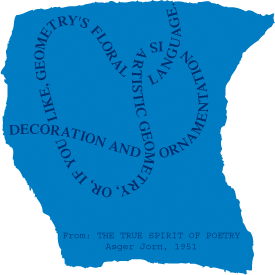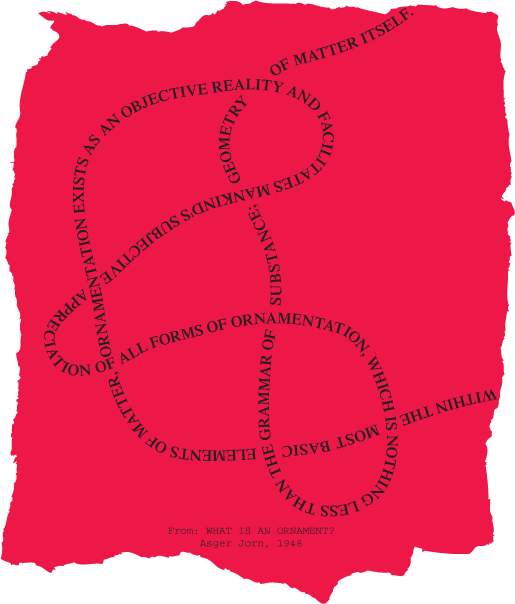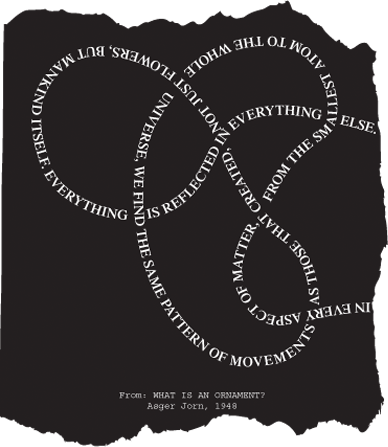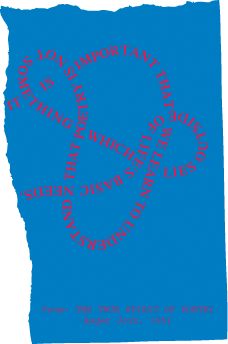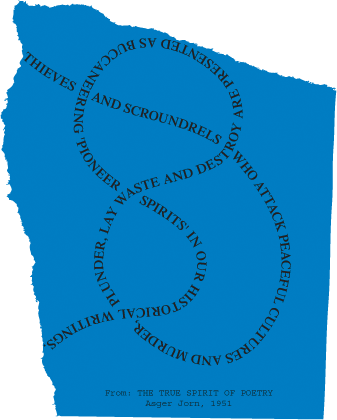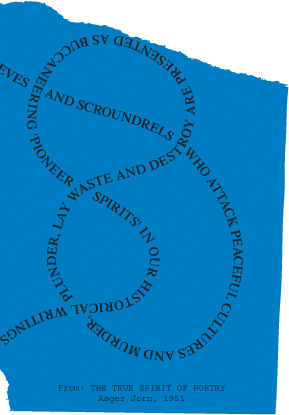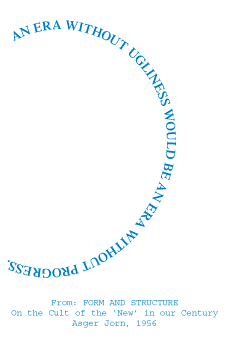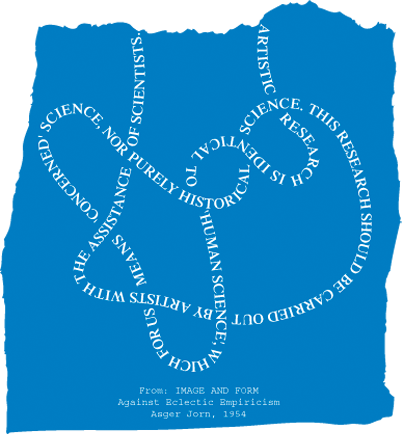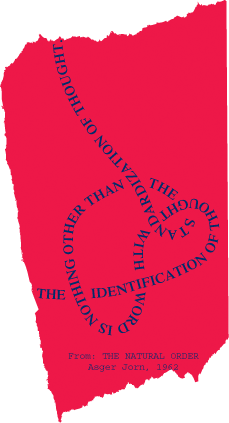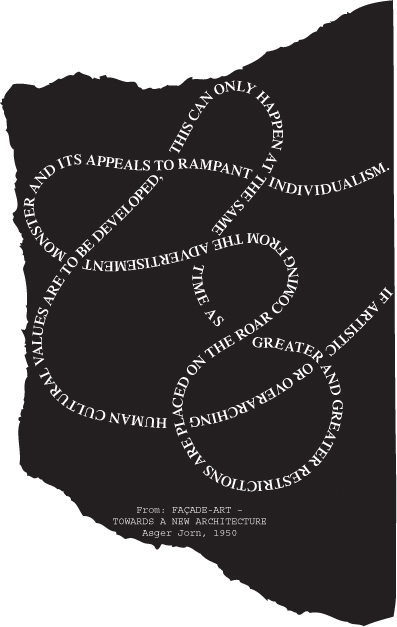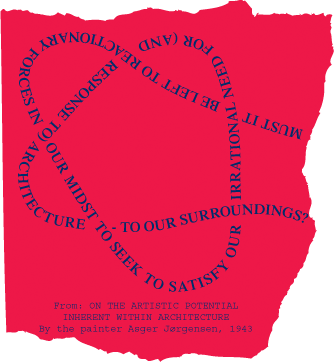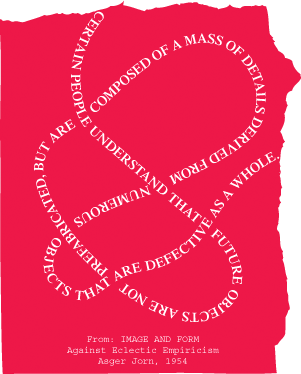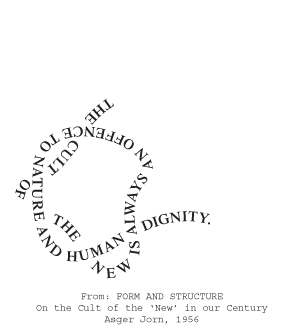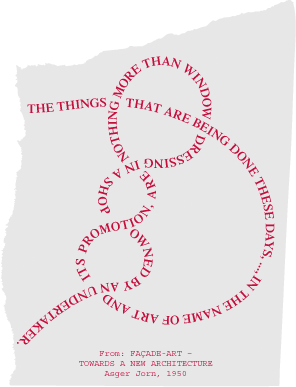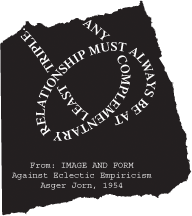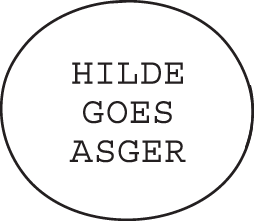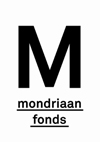MANAGERIAL AUTHORSHIP: APPROPIATING LIVING LABOUR
MANAGERIAL AUTHORSHIP: APPROPIATING LIVING LABOUR was commissioned by Binna Choi and Axel Wieder for Casco Issues 12, Utrecht (NL) in September 2011. It was written by Mattin in May 2010 with thanks to Anthony Iles, Lisa Rosendahl, Binna Choi and Axel Wieder.
When working with noise and improvisation in the context of concert and performance situations, I am interested in the division of labour between performer and audience. Historically, this division presupposed a relation between these two positions in terms of active and passive. In contemporary capitalism, this division is problematised through the recuperation of leisure time and the valorisation of what seems to be unproductive labour. Mirroring this expansive tendency in capitalism, more and more artists are using audience interaction as material for their work, blurring the boundaries between producer and consumer. This way of working, where the artist appropriates intellectual contributions made by others but where the interaction is still framed under the artist’s own name, has a strong relationship to the logic of management, as it has developed from the division of labour into an organisational theory of business. In this text I will explore, through an examination of Karl Marx’s concepts of living labour and the general intellect, a way of working used by artists that I propose is a form of managerial authorship.
MANAGERIAL LOGIC, LIVING LABOUR AND THE GENERAL INTELLECT
Management guru Peter Drucker identified two characteristics of management: innovation and marketing. Innovation does not necessarily need to come from the manager, but he or she is the one who must make sure that it can be marketed. As we can see with intellectual property, an innovation needs to be framed in order to be marketed and given a value. In capitalism, value can only be assigned to that which is measurable or countable. As Alan Badiou has said of today’s configuration of the world as a global market:
Everything that circulates falls under the unity of the count, while inversely, only what lets itself be counted in this way can circulate. Moreover, this is the norm that illuminates a paradox few have pointed out: in the hour of generalized circulation and the phantasm of instantaneous cultural communication, laws and regulations forbidding the circulation of persons are being multiplied everywhere.(1)
Marx’s concept of living labour goes against the idea of countability and generalised circulation. By living labour, Marx meant our potential for creativity; that labour capacity which is not yet tamed, measured and framed by capitalism. Living labour is that subjective ‘flame’ which capital, in order to accumulate surplus labour, seeks to objectify through exchange. However, from today’s perspective it has become clear that capitalism’s ever expanding drive has found multiple ways of framing what Marx understood as living labour. Within the post-Fordist condition, centered around a regime of creativity and flexibility, this expansion can be better understood in relation to another Marxist concept: the general intellect.
In his Fragment on machines Marx discusses how, with the development of technology, workers would increasingly have access to more time to develop and educate themselves through expanded leisure time. Since machines would produce the work that was previously done by the workers, the workers would gain the time to generate social knowledge, referred to by Marx as the ‘general intellect’. This general intellect becomes sedimented in the machines owned by capitalists as fixed capital. By fixed capital Marx meant the capital that is not in circulation, that which is constantly present in the form of means of production such as tools, land, buildings and vehicles.
There has been a lot of discussion around the notion of the general intellect, mostly coming from the so called autonomia or post-autonomia thinkers like Antonio Negri, Paolo Virno, Christian Marazzi, Franco ‘Bifo’ Berardi and Maurizo Lazzarato. For the autonomist, the general intellect has some of the qualities of living labour; it is self-reflexive, affective, cooperative, communicative and creative. For them, these qualities can also be applied to politics, and can therefore produce self-organisation antagonistic to capital.
Responding to this line of thought in her text, ‘Living Labour, Form-Giving Fire’, Katja Diefenbach points out some of the problems of romanticising living labour by incorporating not only our creative capacity but by also making it intrinsically political.
Thus, an effect of the political can dangerously consist of subordinating revolt and dream to the economic primacy of effective doing. The organisation which we are able to give to ourselves would have to do both: coordinate and keep a distance to the process of a radical break; it would have to reject the romantic tradition, by not equating the political with the living and a common to be produced. (2)
Nevertheless we can agree with Paulo Virno when he argues that Marx was wrong to see the general intellect as fixed capital, since now increasingly humans are becoming the machines themselves, the general intellect is not fixed capital but living labour before it is objectified. The general intellect is not value itself but the potential to produce value:
They are not units of measure; they constitute the immeasurable presupposition of heterogeneous effective possibilities. (3)
As human creativity is more variable and heterogeneous than a machine, the framing of it and the production of value through it is more complex. The manager appropriates life processes that he or she might not be able to evaluate immediately, but when the potential of our living labour is realised he or she knows how to define, measure and market it.
THE MANAGERIAL ARTIST
I have absolutely nothing against appropriation or plagiarism, especially if it helps us to counter notions of authorship, copyright and individual creativity. As the Comte de Lautréamont wrote: “Plagiarism is necessary. Progress demands it.” (4) But there are different types of appropriation. Appropriation of works of art and music can help to transgress established notions of originality, ontological conceptions of the artwork and what it means to be an artist. In other words, it can help to challenge notions of quality, taste, craft and individualised production. Nonetheless, the key form of appropriation is that which the capitalist exacts upon the worker by appropriating his or her labour capacity.
In some instances, the two forms of appropriation are combined: in the name of the critique of authorship, and as a way of questioning the passive condition of the audience, the managerial artist appropriates the audiences’ general intellect by giving them the feeling of possessing a certain subjective agency (living labour that is yet to be objectified). However, beyond this appearance of agency, the artist’s framing of the situation generates surplus value for his/herself – in the form of cultural capital etc. – which far exceeds the benefit to the audience.
In an early proto-example of this managerial authorship, when David Tudor performed John Cage’s 4’33” for the first time on the 29 August 1952 at a concert recital in Woodstock, New York, all the sounds produced in the room were proclaimed equally valid as music. Nevertheless, most of the audience did not realise they were making music. By having control over the conceptual discourse underpinning the project, the managerial artist can make sure that everything can be incorporated into their work, in a manner that can only be valuable in such a specific way under the banner of his or her own artistic career. This does not mean that the audience gets nothing out of it, of course one can learn a lot through participating in these types of situations but contrary to the liberating appearance of these events the division of labour between artist and audience remains unchanged.
Today we see artists like Anton Vidokle and Tino Sehgal working according to a managerial logic, albeit in very different ways from each other. During 2008-2009, Vidokle produced Night School, a temporary school at The New Museum in New York. The project involved artists, writers, curators and diverse audiences. Presentations, lectures and workshops were held by people like Martha Rosler, Maria Lind, Liam Gillick, Tirdad Zolghadr, Paul Chan, Natasha Sadr Haghighian and Raqs Media Collective. Later on in Museum as Hub: Six Degrees a group show at the New Museum, Vidokle presented an installation called Night School, 2008-09. (5) The installation included a monitor, a DVD player, and a book case with DVDs documenting lectures and workshops that had happened at the night school. Suddenly, through its documentation, all the content produced by the various presenters and audiences during the presentations and workshops held in the name of education became Anton Vidokle’s artwork. To what extent can one appropriate someone else’s activities? For what reasons? What does it produce?
In the work This Progress by Tino Sehgal, staged at the ICA in London in 2006, one entered the gallery to be confronted by a little girl asking you to reply to the question “what do you think is progress?”. Related questions were then put to you by different people of increasing age as you walked through a succession of exhibition rooms. Placing the spectator in a tightly constructed situation in which little room was left for transformative interaction, Sehgal instead gave you the feeling of being part of an assembly line of knowledge production. Contrary to Vidokle’s practice, Sehgal does not allow his work to be documented, placing the emphasis instead on the moment of experience. This means that unique and individual experiences are not only produced by the work but, more importantly, they produce the work. Taking Comte de Lautrémont’s quote about plagiarism to a new level. This Progress shows us how the general intellect can be used artistically: real life process as constituent content of the artwork.
This management of peoples’ creativity, ideas, personal tastes and lives, is similar to the operations we see happening within social networks, where people express themselves through the use of tools like Facebook, Twitter and MySpace, creating hits for network sites. Guy Debord’s dream and worst nightmare has become true: spectators are emancipating themselves from their passive condition, but at the price of feeling empowered by a system that produces, on the one hand, the feeling of self-agency and on the other hand that productive power which appears to be living labour: as if one were in a hamster wheel which is just pushing capitalism forward. At some point, under all the layers of different networks, somebody is converting these activities into exchange value. In a brilliant paper titled ‘Forking Free Sofware’, delivered at the Make Art Festival in Poitiers last December, Simon Yuill explained how the free software community was being recuperated by a neoliberal logic. Yuill quoted Charles Leadbeater, British futurologist, management consultant, and one-time adviser to the Tony Blair government:
“The avant-garde imagined that spectatorship would give way to participation permitting people to become more social and collaborative, egalitarian and engaged with one another, to borrow and share ideas … Mass participation, Debord’s antidote to the society of the spectacle, has turned into YouTube and social-networking sites on which we can all make a spectacle of ourselves.” (6)
We have to be clear about the relations put to work within the production of the managerial artwork, as well as on the social networks. What for us, as audiences, seems to be the expression of living labour, for the managerial artist becomes productive labour. The conceptual framing works as the means of production: the audience/worker is distanced from the bigger picture – the knowledge, connections and conditions that allow the work to happen and the distribution of its effects. The maintenance of this distance reproduces relations as they stand, the audience is reproduced as audience at one remove from the means of the artwork’s production.
While it is true that as an audience we may be able to express our living labour capacity (not yet objectified and certainly not remunerated), at the same time we are also productive labour. We are producing the work of another artist and we are producing ourselves – depending on living labour capacity – as an innovative audience, which also means achieving the valorisation of the artist and the institution in which the artwork is taking place and the funding behind it. Marx explains what he means by ‘productive labour': “a relation that has sprung up historically and stamps the labourer as the direct means of creating surplus-value. To be a productive labourer is, therefore, not a piece of luck, but a misfortune.”(7) In order for this to occur, a division of labour is necessary.
By being productive labour we are also producing surplus labour. In the Grundrisse Marx explained how this surplus labour under capitalism is constantly split in two (8):
1 – The objective conditions that can allow for a new realisation of labour for its own self-preservation and self-reproduction.
2 – Living labour in the realisation process is estranged from itself as it is reproducing the conditions that makes it alien. Surplus labour reproduces the conditions for the future extraction of surplus labour.
By constantly recreating the conditions for the accumulation of surplus labour we not only recreate the conditions of our self-preservation but also the self-preservation of capital.
The ‘flame of living labour’ necessitates the capitalist material conditions for its realisation (technological, artistic context, musical context), but by reproducing capital in the act of reproducing itself, this living labour alienates itself from its product.
As long as we persist in our condition as audience, we will reproduce the division of labour in which it is the artist and not us, in the last instance, who has the final decision of how the overall activity might be represented.
This instrumentalisation is produced by the artist applying the managerial logic of framing.
What is left of our own subjective agency if our experiences have been appropriated by capitalism at the most sophisticated level? Where are the capacities of our living labour today? What creative act can exceed this commodification of experience? It seems too optimistic to invest faith in living labour, while the current flow of capital is creating already new flexible regimes of subjectivation and an accumulative future for those who are able to invest in these new kinds of creative capital, while the rest are sinking into oblivion. What for one feels like a unique moment is, for another, a link in the chain of a speculative post-Fordist assembly line, where every little interaction can add ‘something’. Whatever this something might be will be decoded in the future and if more value can be extracted all the better, but it already has fulfilled the first purpose: to keep the ball of innovation and activity rolling through exchanging ideas, knowledge and experiences.
Unless this accumulative chain is disrupted, the surplus labour will be continuously reproduced, and in doing so also our own constant penury. Experience has been commodified, and it seems impossible to combat this fact with ideology, not with discourse, nor by self-aggrandising our potential living labour. Instead what seems more urgent is to create situations for ourselves that challenge the very notion of production, and the way we our subjectivities are produced. There is no return to a generic essence of self or a pure subjectivity. We seem to be in irreversible times, disturbed and damaged forever, pushing ourselves further in our own alienation, as if we were walking blindly within the conceptual parameters of the managerial logic, thinking that we are going towards our own individual liberation, but we are, instead, constantly reproducing the distance between our actions and our control over the conditions of the context that we inhabit. Liberation does not come from this type of realisation process, but from a distorted self-realisation process that goes against our own conditions and even our subjectivity itself, producing instead an anti-self. The anti-self destroys its own position by nullifying the attributes of accumulation that shape our subjectivity today, such as confidence, contacts, recognition, and attention. Being no one, being nowhere, being nobody, definitely not an artist, certainly not an audience, producing nothing that separates us from our objective conditions, having nothing to exchange because there is nothing to count that someone else can frame.
NOISE AND THE DESTRUCTION OF MANAGERIAL LOGIC
Noise exacerbates the rift between knowing and feeling by splitting experience, forcing conception against sensation. Some recent philosophers have evinced an interest in subjectless experiences; I am rather more interested in experience-less subjects. Another name for this would be ‘nemocentrism’ (a term coined by neurophilosopher Thomas Metzinger): the objectification of experience would generate self-less subjects that understand themselves to be no-one and no-where. This casts an interesting new light on the possibility of a ‘communist’ subjectivity. (9)
There is a growing emphasis in contemporary capitalism on individual experiences in production and consumption. In a given context, when we experience our living labour being realised, the potential of our subjectivity, of our intellectual and affective capacity, we feel empowered, we feel that we can and that we are a constituent part of the context that we are in. We don’t have an overview from outside, we are inside.
As we said before, this feeling of self-empowerment is used by capitalism in its creation of a framework where a valorisation of whatever activity that occurs within can be realised a different points and moments. While we gain unique experiences, momentarily feeling happy about ourselves, a capitalist logic expands deeper and deeper into our subjectivity.
In his text, ‘Genre is Obsolete’, Ray Brassier has pointed out how the commodification of experience has not only happened at the ideological level but at the neurophysiological level. (10) Therefore the production of aesthetic experiences does not seem to be enough for us to challenge and understand our contemporary condition. Noise does not work well at the level of either aesthetics or experience, in fact its qualities radically challenge both of these notions. Rather than trying to reconcile knowing and feeling, noise can help us to dissociate the notion of living labour from subjectivity in a way that exceeds the logic of framing, by either being too much, too complex, too dense and difficult to decode or too chaotic to be measured. One cannot have mastery over it, it is a kind of useless general intellect that suspends values of judgement such as good or bad or right or wrong. To think of it in moral or ethical terms seems ridiculous. Noise with its epistemic violence, counters the division between activity and passivity. By making us aware of our impossibility to decipher it, noise alienate us. We all are no-one in front of it. We cannot find reaffirmation of our accepted positions (either as audience or performer).
Unfortunately in practice, noise has become just another musical genre and many people could predict what a noise concert might be like. In noise concerts the performer/audience division is reproduced as it is elsewhere and players rarely deal with it. Rather than trying to perpetuate noise as musical genre, I would like to think through how noise as it carries qualities such as chaos, density, saturation, precision, intelligibility … can be executed in order to dismantle the frameworks that so often shape the way we behave and how we relate to each other. Perhaps by putting ourselves through the grinder of noise we may destroy our internalised managerial logic.
1 Alain Badiou, Ray Brassier (Trans). Saint Paul: The Foundation of Universalism, Stanford: Stanford University Press, 2003. p.10.
2 Katja Diefenbach, ‘Living Labour, Form-Giving Fire’, in Gal Kim (Ed). Post-Fordism and its Discontents, Forthcoming, Berlin: B_books, b_books, Maastricht: JVE, Ljubljana: Peace Institut.
3 Paolo Virno, The General Intellect, http://www.generation-online.org/p/fpvirno10.htm
4 It is interesting to note that even if Guy Debord used to cite this quote, he terminated his relationship with Henri Lefebvre and accused him of plagiarising the text ‘Thesis on the Paris Commune’ which Debord co-wrote with Attila Kotanyi and Raoul Vaneigem.
5 http://museumashub.org/node/48
6 From Simon Yuill’s public talk at the Festival
7 Karl Marx, Capital: A Critique of Political Economy, London: Penguin Classics, p.644.
8 Karl Marx, Grundrisse, translated Martin Nicolaus, London: Penguin Books, 1973, p.454.
9 Ray Brassier, Against Aesthetics of Noise, http://www.ny-web.be/transitzone/against-aesthetics-noise.html
10 Ray Brassier, ‘Genre is Obsolete’ in Anthony Iles & Mattin (eds.), Noise & Capitalism, Donostia/San Sebastián: Audiolab-Arteleku, 2009: http://www.arteleku.net/audiolab/noise_capitalism.pdf
INTERVIEW WITH MARTIN WOOSTER (II)
Martin Wooster is a philosopher who’s ‘Response to Asger Jorn’s ‘Value and Economy’ is published on this blog in the category of the same name. Below is the second part of a series of questions that his response raised with me, and which he generously agreed to answer.
HdB: You write that “If we consider modernity and its enlightenment concept of politics to be an ongoing crisis of attentiveness and of which the changing configurations of capitalism continually push attention and distraction to new limits and thresholds then one of the best ways to navigate such a condition might be in terms of a historical dialectic of boredom and distraction.” If we would go along with Jorn’s so-called ‘triolectic thinking method’ with which he had the intention to overcome the dual way of western logical thinking based on dialectics, then what could be a third element in “the historical dialectic between boredom and distraction?” Could I read your text in such a way that you are in fact proposing that art could be such a third element?
Another paragraph that I thought was interesting in relation to Jorn is where you write “How are we to practice a properly critical art towards culture? Obviously any such practice involves taking up a stance unafraid of the culture industry and its growing solidified operations and attitudes validated by prevailing forms of rationality.” Jorn once wrote: “When the aesthete reads a notice saying ‘The Ice is Unsafe’, for him it is a challenge not only to test whether the note is telling the thruth, but to try out what unsafe ice feels like. This is the precondition of aesthetics, development and progress: skating on thin ice.” (Asger Jorn, Held og Hasard. Dolk og Guitar). Art historian Helle Brøns phrased it very accrutaly when she wrote that “Jorn’s willingness to move into unknown territory, to make mistakes and renounce ordinary logic was both a specific artistic strategy for Jorn and a general attitute to life.”
What I find interesting is, that this attitute is not only reflected in the physical outsome of his work, but also the way that he dealt with what in his time could have been called ‘the creative industry’. For instance when he was awarded a Guggenheim Award in 1964 he send a telegram to the president of the Guggenheim saying:
GO TO HELL BASTARD—STOP—REFUSE PRIZE—STOP—NEVER ASKED FOR IT—STOP—AGAINST ALL DECENCY MIX ARTIST AGAINST HIS WILL IN YOUR PUBLICITY—STOP—I WANT PUBLIC CONFIRMATION NOT TO HAVE PARTICIPATED IN YOUR RIDICULOUS GAME.
MW: In my original text it is true that I was making a case for the dialectic and to do so I used the dual terms, boredom and distraction. The principal reason for this decision was that these terms effectively allow one to concentrate on the issue of time, important because we might reasonably argue that the category of time is the deep structure of what capitalism has become. The question I had begun to explore was, what will allow us to deactivate, suspend and transform the present movement of time?
If time has come to be dominated by the fact that production and consumption follow each other in a faster and faster cadence, only diminishing our capacity to think, then what will allow us to grasp time more fully? Since time is itself a plenitude and a possible serenity but only for Jorn if this necessitates that it be less blind and more ludic because time should belong most fully to artistic people determined to be set free from the rectilinear progression of humanity – the march of historical materialism in which everything is played out in advance. In returning to Jorn’s notion of grace, of which he will colour by reintegrating it with the myths of people ‘outside history’, we grasp his attempt to throw our image of the world out of focus, to distend it and draw it towards a world of non-coincidence, of silence, of space and depth and all that is bound to dislocate thought.
This might also be what Jorn considers a necessary move to suspend the future, to concern our thoughts more fully within the already present and thus think a more profound relationship between subject and object. Yet this is something continually overlooked because we are always looking to an impossible future as entrapped by a totality we have already fashioned in advance. As such we should also be reminded of the Belgian writer and philosopher Raoul Vaneigem who said that revolution has to be implemented in the way we live, to be enacted as a kind of political-aesthetical act that is less an exodus but more an exorcism of all our feelings for commodities. Indeed he reminds us that the political left will continually let itself down if it forgets the necessity of aligning itself with art in the struggle against capital’s colonization of the future.
If bourgeois thought according to Marx sought to rise from the particular to the universal our task, given that our lived world is one completely structured by an ideology that leaves the value of money as a living communicator to strip the living of time and souls, is to rise from the universal to the concrete. In considering the category of time we may also grasp a sense of the future not without influence in the past, which determines to the same extent that it is determined by it. Of course this is only made possible in the present, in an immediate rapport with the totality of time in the here and now. Hence the importance attached to boredom and for it philosophically to become associated with the modality of possibility. Heidegger talked of a ‘profound boredom’ as the feeling of possibility itself, and of which we might add to its importance by it surely being one of the temporal forms of the experience of abstraction.
One of the ways we can grasp this shift that thought has to undergo to make renewed sense of our world is through dialectical thought. From the 1990’s onwards Jameson persuasively argues that the social space has become completely saturated by a homogeneous image of culture and therefore he maintains an urgent shift to a more dialectical mode of thought is necessary. Maintaining that the dialectic had never been fully realized in its full potential because it had failed to properly grasp the paradox of a world of constant changeability but nevertheless starved of ideas offering real alternatives.
Jameson argued that we needed to change the very principle of change itself, which only becomes possible within a truly contradictory mode of thought. Hence the need to grasp the inertia of the old and the rise of the new as equally important to properly enact a dialectical mode of thought as manifested in a fuller notion of repetition. As such we may conclude that where the system becomes stuck by the persistence of the old beyond all possible usefulness is and remains the only possible site for the rise of the new.
For sure the dialectical mode of thought takes on a tragic complexion, certainly more tragic than the poor man’s version of Hegel’s thought that unable to deepen the dualisms ends up simply mediating a compromise between them and us but doing little to change its basic structure. We might like to think we are unified subjects and that the problems we face are representational and thus relatively easy to think through but unless we undo this figure of the unified subject and see the contradictions and multiplicities behind what allows this figure to be constructed – only then are we really thinking dialectically. Clearly what needs to be seen is no longer visible for as Marx long ago wrote, “the riddle of the money fetish is therefore the riddle of the commodity fetish, now become visible and dazzling to our eyes.” Therefore it seems essential that we render ‘inoperative’ the existing idols of thought and such movements of consciousness that may not be materially divided so as to rupture the system of empirical possibility and its self-declared ‘objective’ intelligibility.
In turning to the production of art and of which we might ask that it carry a privileged position as that third element capable of deepening the boredom-distraction dialectic is to affirm the material, the concrete and the sensory dimensions of experience. Yet however prepared and precipitous the work, when something more difficult is asked, something that will necessarily lead artists to being pulled in directions they only half understand and into places outside, other, beyond their control, I think only then should we be unafraid to acknowledge such activities as attempts to reawaken the hostility between society and culture rather than placating it with pseudo-political products for self-indulgent consumption. In this respect Jorn’s idea that the artist needs to “skate on thin ice”, in order to properly test the dangers of the non-teleological ground is very fitting. Not least because it opens the non-coincidence between thought and being and as in Coleridge’s “willing suspension of unbelief” welcomes what then becomes of ‘materiality’ itself.
If we take Nietzsche’s theorem of the Übermensch as his necessity for contemporary culture to invent a system of education and self-education that might be capable of producing individuals fit enough for solving its impending problems then surely this will also be a matter of enacting a society able to leave possibilities unused. Equally if art lifts into the light the social limit of freedom so as to be perceived then just as with any meaningful sense we give to the notion of utopia, we need to recognize such places as essentially insoluble and uninhabitable.
Therefore I argue it is less a matter of going head to head with capital, I’m sure it would love nothing more, instead individual’s need to find subtractive protocols that are every bit as corrosive as money. In giving way to a universality that remains critically incomplete means abiding by an aesthetics of the local, the in situ and is properly sensitive to places and moments. Indeed, such an idea of aesthetics wholly depends on thinking against the constituted self so as to open gestures of placing, inscribing and inserting a mark as being the only way to prolong both the saliences of work and life. If in following the path we make for ourselves as we walk along it, it could turn out that revaluing the values and remaining loyal to the earth are tasks that amount to the same thing.
INTERVIEW WITH MARTIN WOOSTER (I)
Martin Wooster is a philosopher who’s “Response to Asger Jorn’s ‘Value and Economy'” is published in the category of the same name. Below is the first part of a series of questions that his response raised with me, and which he generously agreed to answer.
HdB: When emailing with Dave Beech, the organizer of the conference ‘Art and Capitalism’, about Jorn’s Value and Economy he actually was quite critical about it, also questioning the ‘accuracy’ of Jorn’s critique of Marxist political economy. Reading your response to Jorn’s Value and Economy, it comes across as if you mainly felt inspired by Jorn’s writing, without focusing too much on how ‘accurate’ his criticism is or is not, which runs more parallel to my own approach to Jorn (who anyway hardly ever properly quotes of references his source material, and generally liked to mingle and appropriate as he saw fit). How do you feel about that?
MW: Yes I agree that Jorn is a complex and contradictory man but I guess this is something entirely fitting with someone fully engaged with ideas that resonate within his own time and which are also able with some urgency to speak to ours. I also agree that his writings are difficult but nevertheless they are imbued with energy and passion and I’m very thankful for Jakob Jakobsen for introducing this artist/thinker to our Marxist reading group.
Jorn’s text has multiple layers of interest that relay a care and concern for humanity and the dangers he saw for it looming upon the horizon but his writings do not suggest we can reclaim a future qualitatively different from the present by continuing to reinvest in the idea of the horizon. Rather I think we should take his notions of variability and value as so many opportunities to model experimental practices of negation that puncture such horizons of expectation. Jorn might in fact be saying, “I don’t want to expect anything from the future – so I start my future as an artist.” In this respect I found reading Jorn alongside Nietzsche best, for like him, the crisis of divided consciousness that governs 2,000 years of Christian experiments and which Hegel had attempted to solve through the unifying capacities of the will to reason, is instead one that can only truly be tackled by investing in the contingent histories of the human body.
Of course today more than ever, as processes of dematerialism gather pace, we know how prone the body is to its desperately clinging to any floating sign regardless of whether they be signs of death, panic, fear, signs of insecurity and instability but this does not exclude the possibility that there may also be signs of a new multiplicity that is struggling to be born, exist and thrive. For sure, such a promise is, if nothing else precarious because it is more than likely that, as Nietzsche pointed out, important events are ushered in ‘on doves feet’ and as such invariably go unnoticed.
But perhaps underlying and implicit to this logic also lies Nietzsche’s notion of what constitutes a ‘great health’ – the paradox that biological normality doesn’t reside in the capacity to impede variations or even diseases of the organism but will be found rather in integrating them within a different normative material. Equally at the social level, where we find that we are all elders and all children, wanting a hearing for our injustices, for our justices, but with increasingly no voice for the other, the forbidden, or the outcast to be heard there is only a world in which our danger to one another grows faster than our help for one another.
I’m a latecomer to Marx and then it is the philosopher in Marx that interests me more than any science we give to the term of historical materialism. Thus like Jorn, for me politics is primarily an art and not a science since any meaningful antagonisms we might be able to create and further what it means to be human are themselves the product of an artful intervention. To hold onto a certain discursive framework can be useful for building upon ever-greater discursive transparencies within the social sphere, and from here, for developing new social relations, particularly in allying the production of art to the greater discursive exchange with others. Yet for me underlying this logic is a certain teleological necessity that, to use a phrase from Badiou, ‘leads out of potentiality into the bull’s eye of actuality’ and only continues the history of metaphysics from Aristotle to Hegel.
HdB: Was there anything else striking in Jorn’s text that you did not mention in your contribution for the conference?
MW: Jorn explicitly understands value as the transportation of forces, something entirely opposed to the size of these forces, their validity in essence or their quantity. Indeed I very much like Jorn’s emphasis on transport, especially in its superfluous and unnecessary capacities because in this way he saw the transformation of time into space and space into time as events in themselves. This is something I didn’t really pick up on in a first reading but certainly allows us to think of Marx in artistic and literary terms and not solely as an outliner of a political program. For me this deals with the crisis of Marxism and sets us to think seriously the becoming necessary of the encounter of contingencies. Perhaps we can explore this thought a little further later.
HdB: And what would be your main critique on Jorn’s text?
MW: You ask me what my main critique of Jorn’s text might be to which I can only add I don’t really have one. He gives us certain ideas from his time of which it is then up to us to find ways to transport them into yet other ideas relevant to our time but in each case we should hold to the idea that it is the body and its power to affect and be affected that matters most. Its capacity to break through the upper crust of language to ultimately produce effects exceeding itself and the grammar of the language system we find ourselves immersed in is I think the only way we can recuperate more interesting temporal dimensions and spaces of which no equivalent value can be posited. Clearly Jorn thinks we need to move away from our emphasis on controlled critical minds towards critical bodies, for in seeking new forms of value we may push further the declination of the relation between body and world. Attempting to fragment the idea of the ‘political body’ in its modern as well as it totalitarian declensions could be one way of intensifying the agonistic politics that these multivocal conceptions of value might inspire. When Jorn alludes to the vibrancy of the Scandinavian sensibility towards the body that is ever subject to variability, change and fleeting in existence, we might look upon this as an initial movement from the body proper to something like an offering made by people to themselves. Perhaps as in learning to hunger for hunger itself this we should understand as something like an organ that now no longer stands for a body. Having no fixed class allegiance and out of place among all delicate hierarchies it takes to the road where easily put into the service of the oppressed it may take up the call of freedom.
HdB: At the very beginning of your own text you write that “Yet we find our modern world to be increasingly dominated by the propagation of work without quality and entertainment without value.” Are you then referring to Jorn’s idea that uniform work is valueless, and that only variability of the work, new ideas create surplus value?
MW: In many respects I feel I may have already answered the last question concerning our world where work is without quality and entertainment is without value. For Marx quality has its emphasis on space and the body and obviously when unemployment is now very much a form of labour and those who are employed are increasingly running in one place while following images moving across screens – the body is most in question. Equally as labour shows more and more signs of being performed as entertainment, effects, processes and feelings are communicated to us as entertainment, all becomes reduced to just one thing: the commodity. In my text I had treated entertainment as an effective mechanism to keeping meaninglessness at bay, too afraid of boredom we continually take flight from it, but this does not exclude the possibility of finding a new relationships between these terms, ones with a much greater value. This I think is an urgent area of thought for us today and one Jorn has helped in pointing us in the right direction.
A MONTAGE OF ATTRACTIONS (JORN – CABRAL)
The two photographs come from different worlds and different periods in time. Both revolve around two men that did not know each other.
I came across the first photograph at the Museum Jorn in Silkeborg, Denmark. The other is from the private archive of Manecas dos Santos, who was in command of the northern front during the liberation fight in Guinea-Bissau. It was shown to me by a friend, Catarina Laranjeiro, who has been engaged in recovering private photographic archives from previous freedom fighters in Guinea-Bissau.
The first image is taken by an unknown photographer probably some time in the 1930’s. It shows the Danish avant-garde artist, writer and thinker Asger Jorn (1914-1973) mounting a painted canvas on the outside wall of a country house, probably in the Danish region of Jutland, while being watched by a man and a little girl. In the second photograph (photographer also unknown and taken in the early 1970’s) we see a group of freedom fighters from PAIGC, The African Party for the Independence of Guinea and Cape Verde, somewhere in Guinea-Bissau. While two of those men set a mortar probably to bomb the Portuguese colonial troops, Amilcar Cabral (1924-1973), wearing the sumbia (a knitted cap worn by many men mostly in Guinea-Bissau, Gâmbia and Senegal), inspects the landscape as two others also do. Cabral was a Guinea-Bissauan and Cape Verdean agricultural engineer, writer, and a nationalist thinker and one of Africa’s foremost anti-colonial leaders.
It seemed to me before, in an ineffable way, that the figures of Jorn and Cabral somehow attracted each other, hence the reference in the title to “Montage of Attractions”, a montage method practiced by filmmaker Sergei Eisenstein. The energy in Cabral’s texts “The weapon of theory” from 1966 http://www.marxists.org/subject/africa/cabral/1966/weapon-theory.htm and “National Liberation and Culture” from 1970 http://www.historyisaweapon.com/defcon1/cabralnlac.html seemed to dialogue with the energy in Jorn’s words, especially those in the publications released with Jorn’s Scandinavian Institute of Comparative Vandalism founded in 1961. The linkage of the images of these two men formalize and formulate that attraction.
The concept that emerges from this attraction is the one of Emancipation. In both images we see people preparing their instruments of emancipation. This emancipation depends on reactivating the links to the layers of ancestry knowledge that modern society disabled, in order to satisfy the need of its productive system. The construction of the future lies on understanding the relation of the present with its ancestry through concrete actions pursued on the field.
Cabral and his men seek to emancipate from the domination of a colonial imperialist system by relinking with the historical process of Guinea (Africa) before the Portuguese (European) domination. Jorn seeks to emancipate from the domination of a dialectical system of thinking that leads to dualistic notions by introducing a triolectic system of thinking that leads to complementarities instead of dualities.
The drawings attached to these images were made under the influence of this attraction with the concept of Emancipation on the horizon with the literal intention of drawing links between apparently diverging energies on a piece of paper.
Daniel Barroca, 2013
